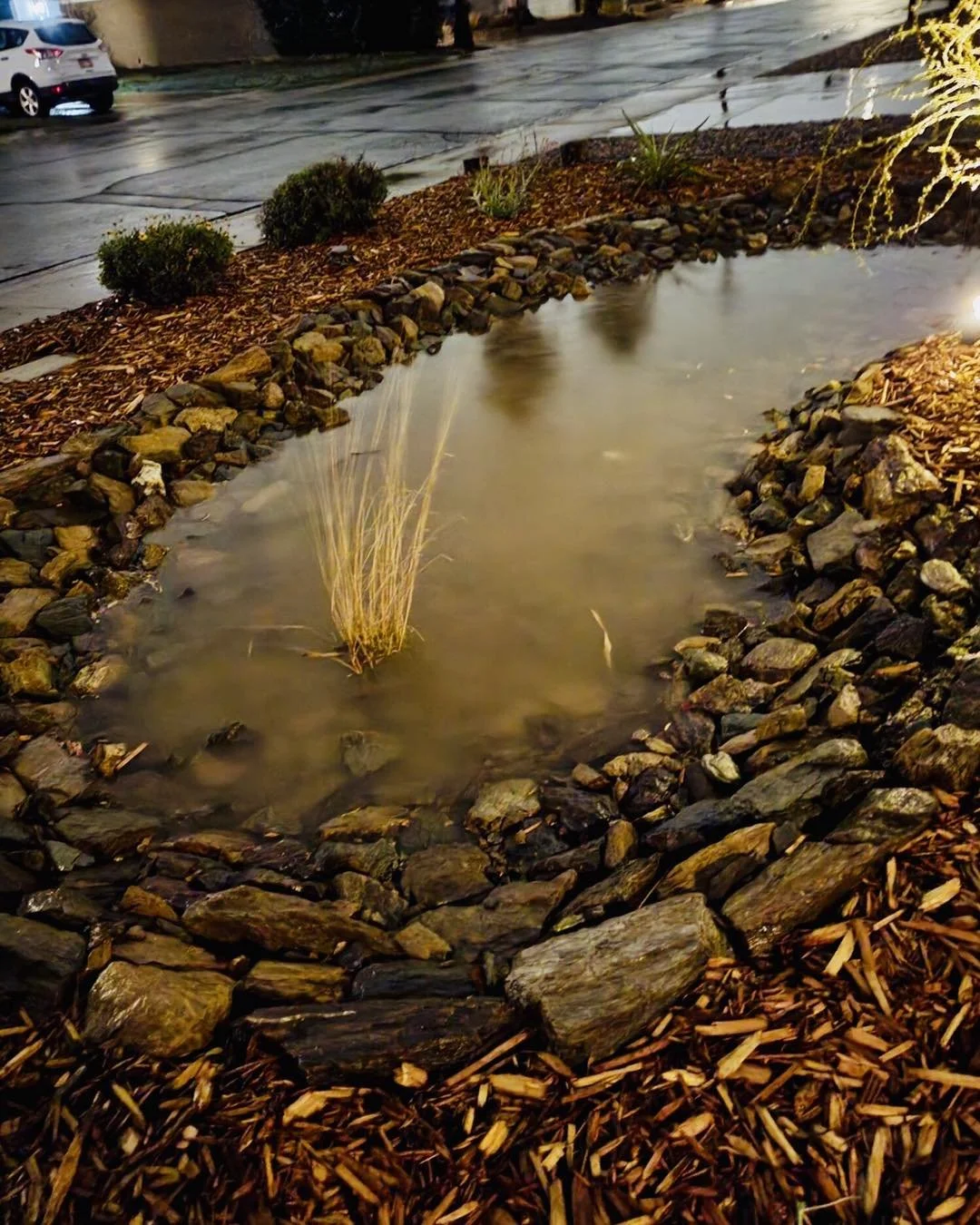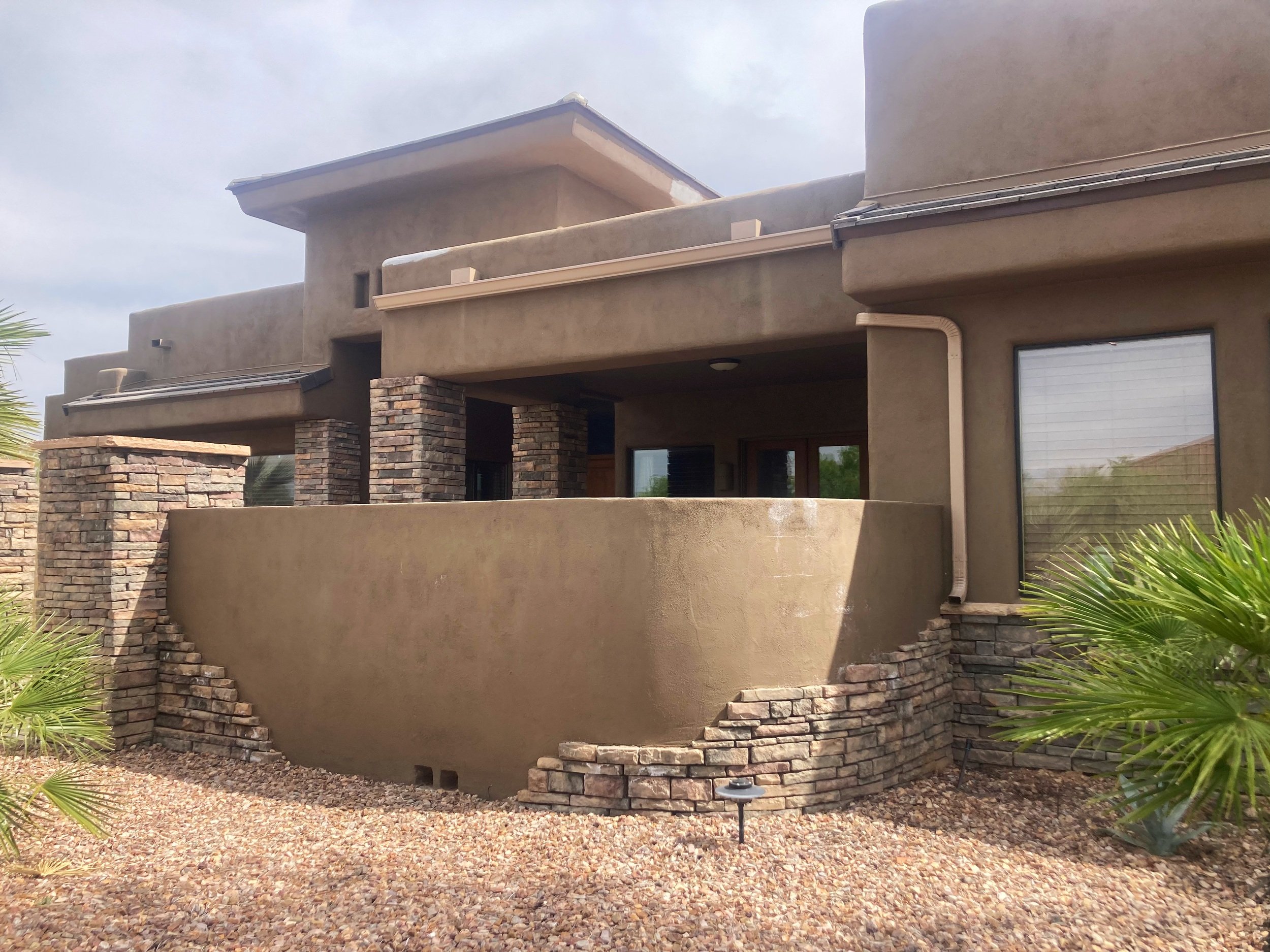
Seamless Gutter Install & Repair
Entire Phoenix Valley • All Roof Styles • Same / Next-Day
Protect Your Home • Lower Water Bills
Types of Gutters
“Should we just do it ourselves?”
⛔️
DIY Pieced Gutters
Assembled from individual sections (usually 10 feet long), they are joined together using couplings.
Vinyl pieced gutters are the most likely to leak over time and we don’t recommend them unless you’re in a bind and need the cheapest solution as quickly as possible.
Metal pieced gutters are slightly better, but also tend to leak.
✅
Seamless Gutters
These heavy-duty aluminum gutters are “printed” on-site to the exact lengths you need, using a specialized machine. By Design they cannot leak unless punctured in some way, which is highly unlikely.
For this reason, these are the only gutters we recommend, and the only kind we install. They’re less expensive than you might think! Less than $20/foot at the highest range.
Examples from our Projects
-
Any Roof Style & Shape
Corners, curvatures, weird angles — it’s all part of our creative problem-solving. There are very few things we haven’t seen yet!
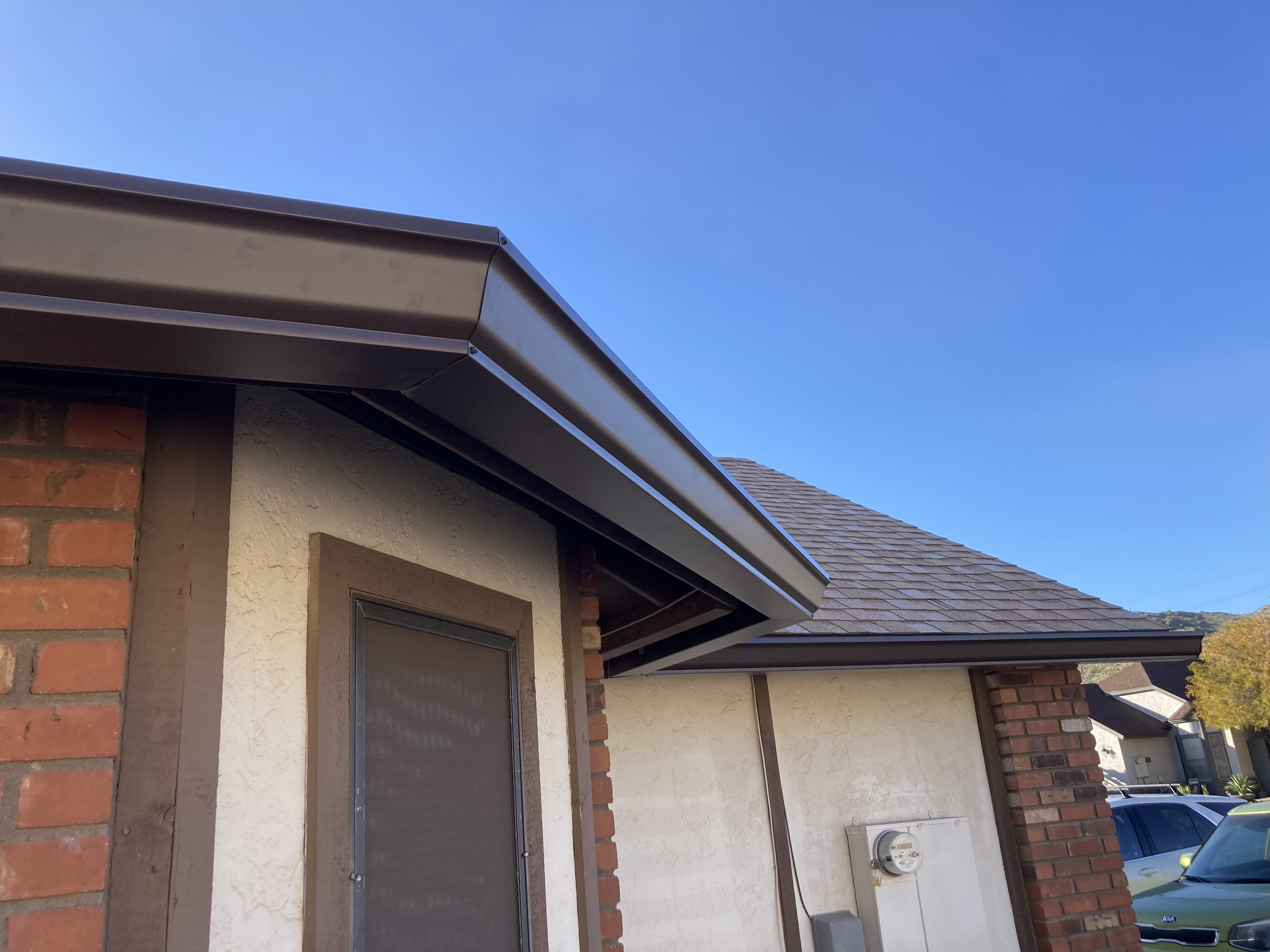
-
Scupper Conversions
We replace your existing scuppers with a design that pushes rainwater straight down into your new gutters
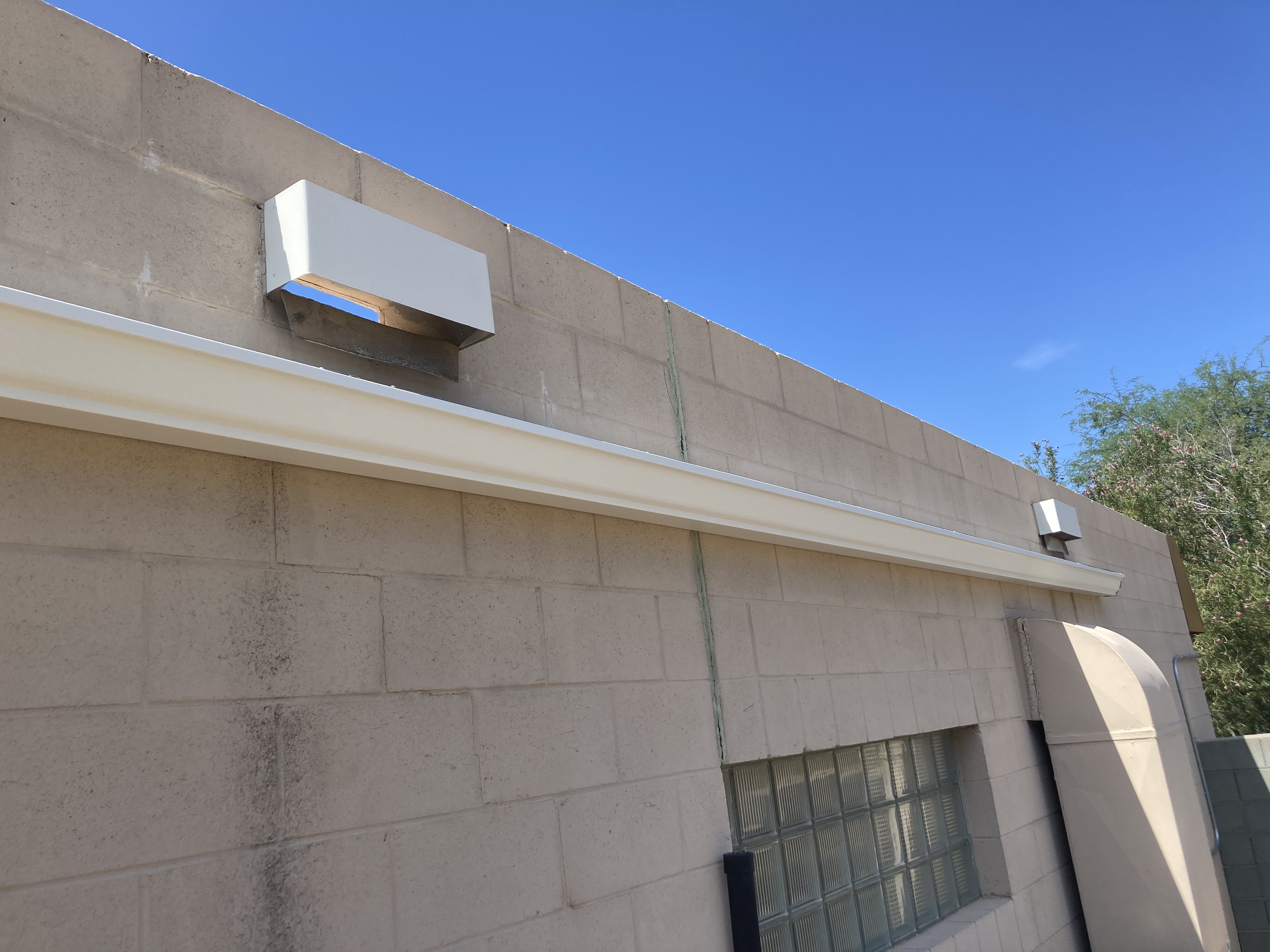
-
Multi-Story Installations
No matter how high your roof is, our ladders can reach it. We’ve installed gutters & downspouts on 3-story apartment buildings and 25-foot high structures.

-
Unique Catchment Solutions
We custom-build solutions like this aluminum collection box to prevent all overspray — even in the biggest storms!

-
Creative Downspout Solutions
House builders do not factor in rainwater in the desert, but we can design & build systems that move it almost any which way we want, like this angled downspout leading to a rainwater tank.
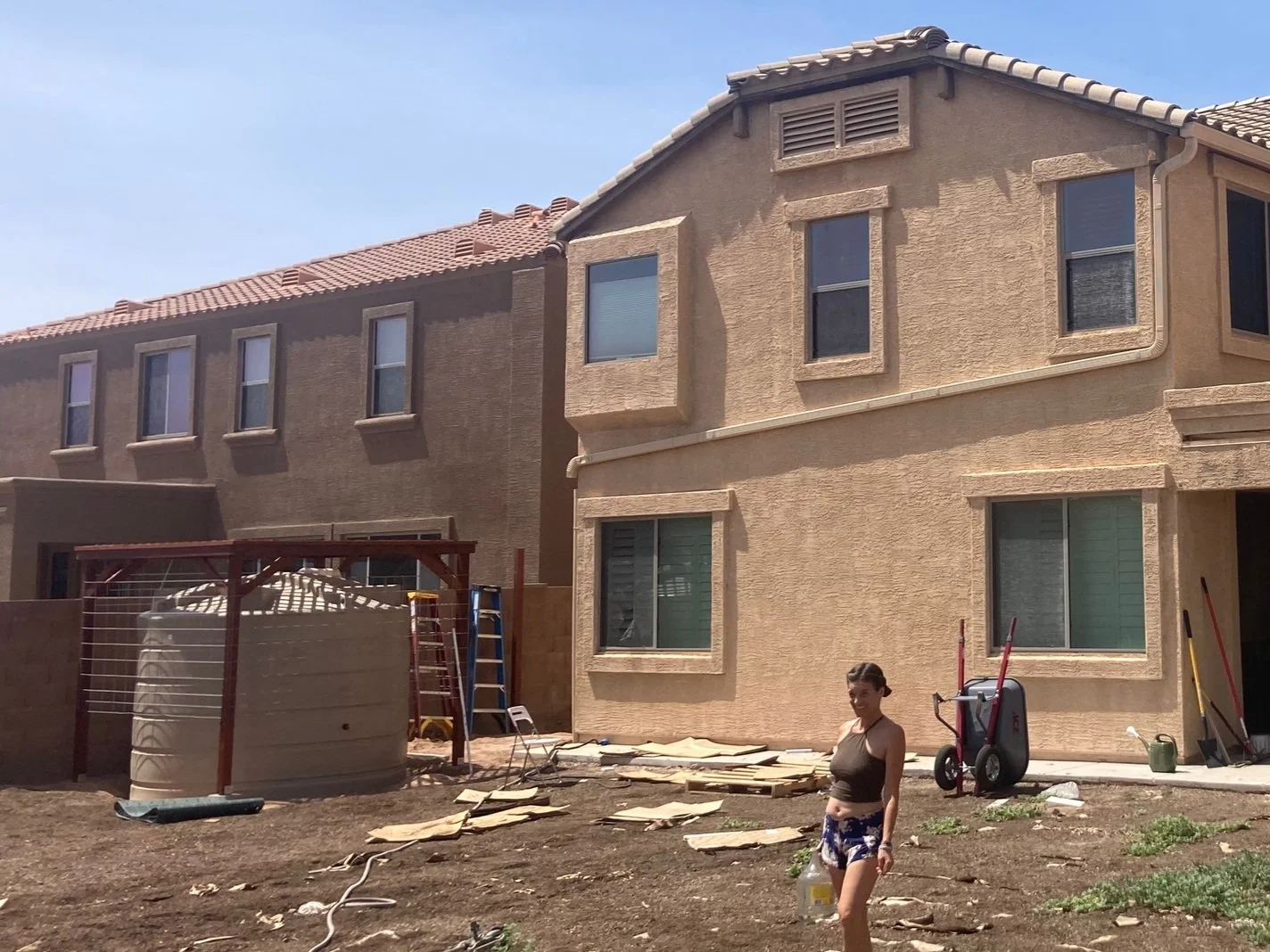
-
Staying Away from Hardscape
If the only choice is to move rainwater away from patios and other hardscapes, we can figure out a way to get it done, like this long angled downspout leading away from the patio.
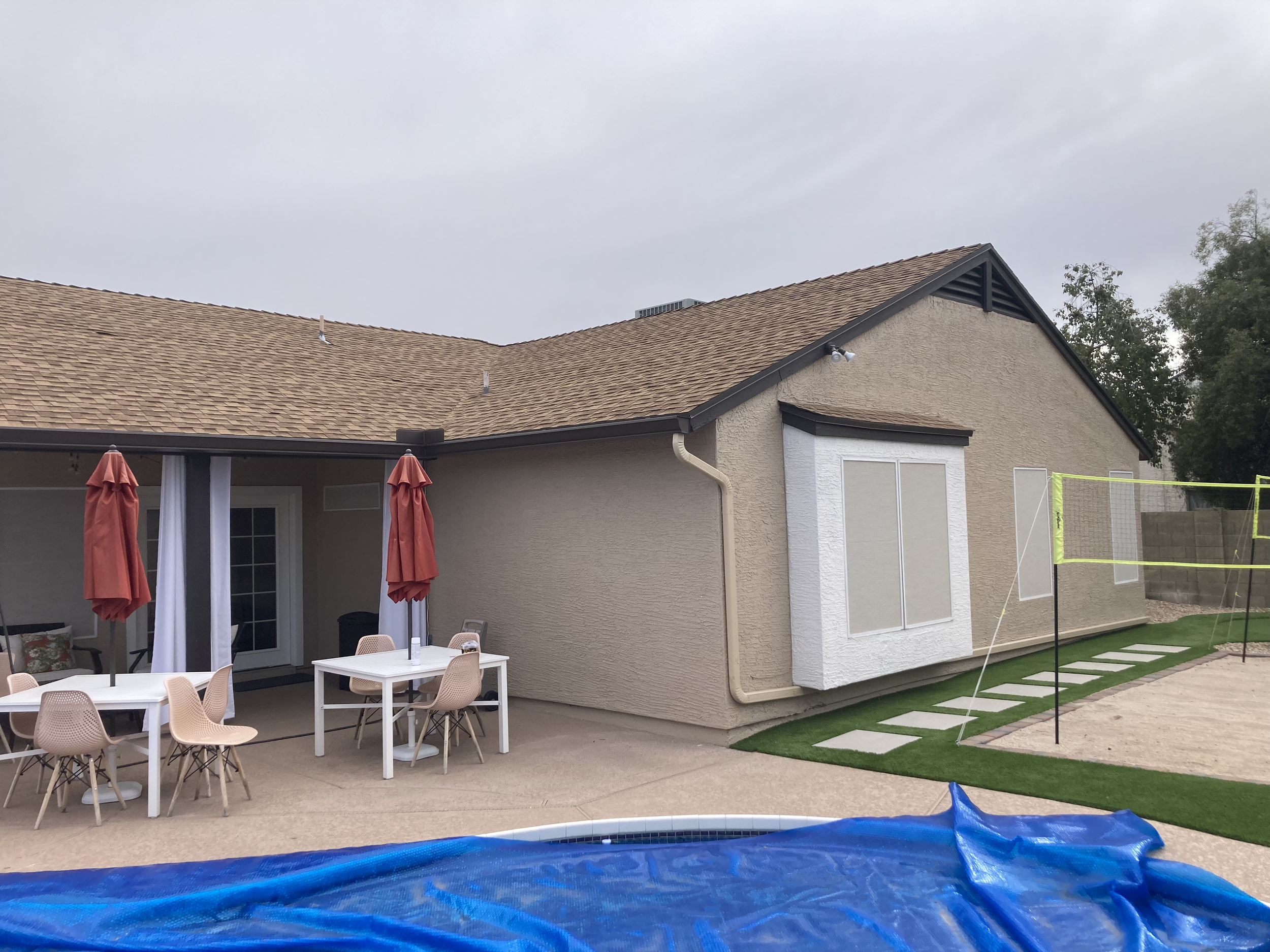
-
Going Underneath Hardscape
We can also connect downspouts to underground drainage pipes to bring the rain water underneath hardscaping. We either cut the concrete/deck and replace with color-matched pavers, or if it’s already pavers we simply pop them out and replace them.
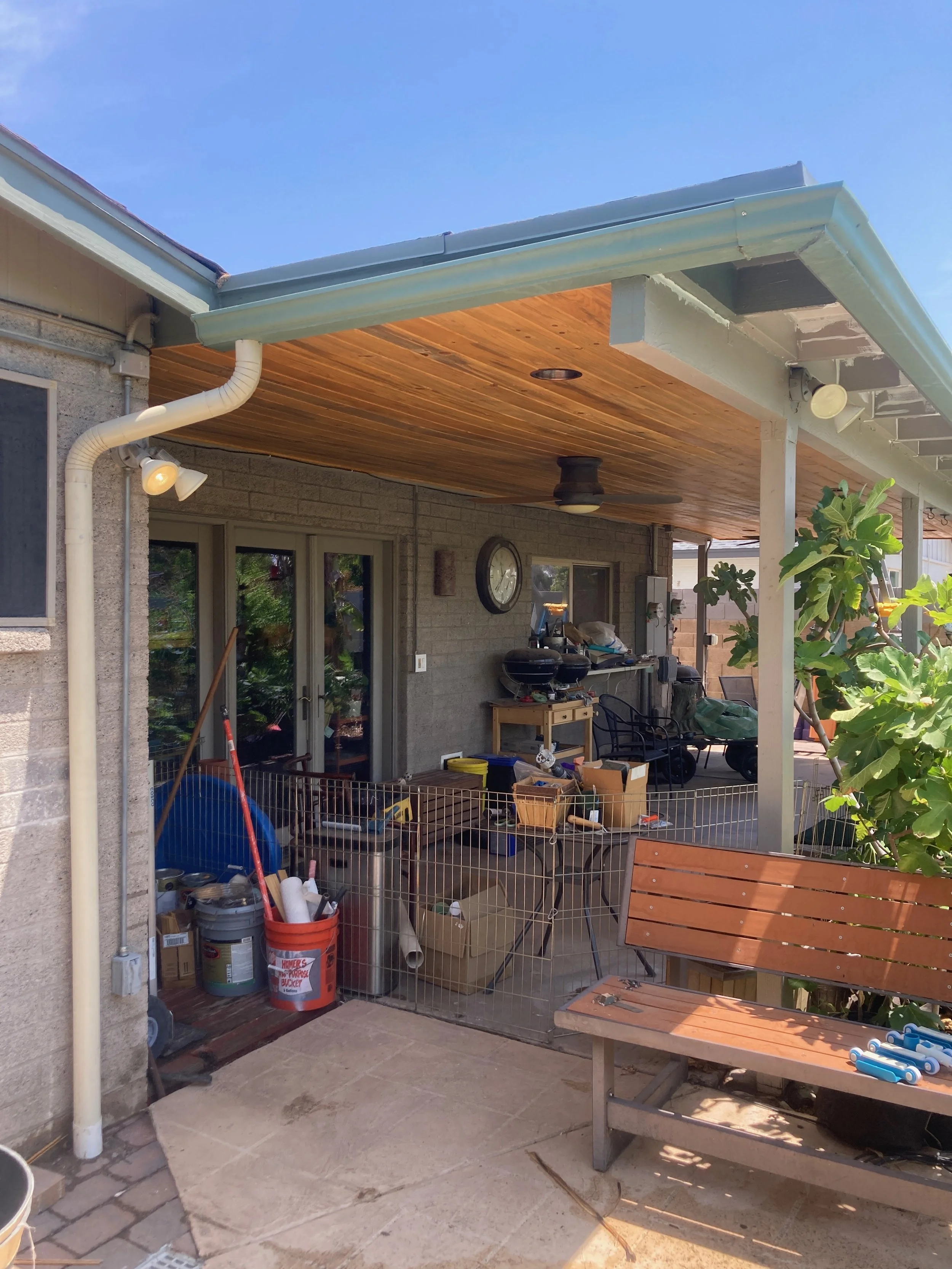
-
Rounded Edges Included!
Gutters don’t have to be boxy & rigid. They can be organic & flowy to match your home’s beautiful curves. In this example the homeowner wanted the gutter system & downspouts to pop from the stucco — but we can color-match any house to make your rainwater harvesting system blend in, instead.
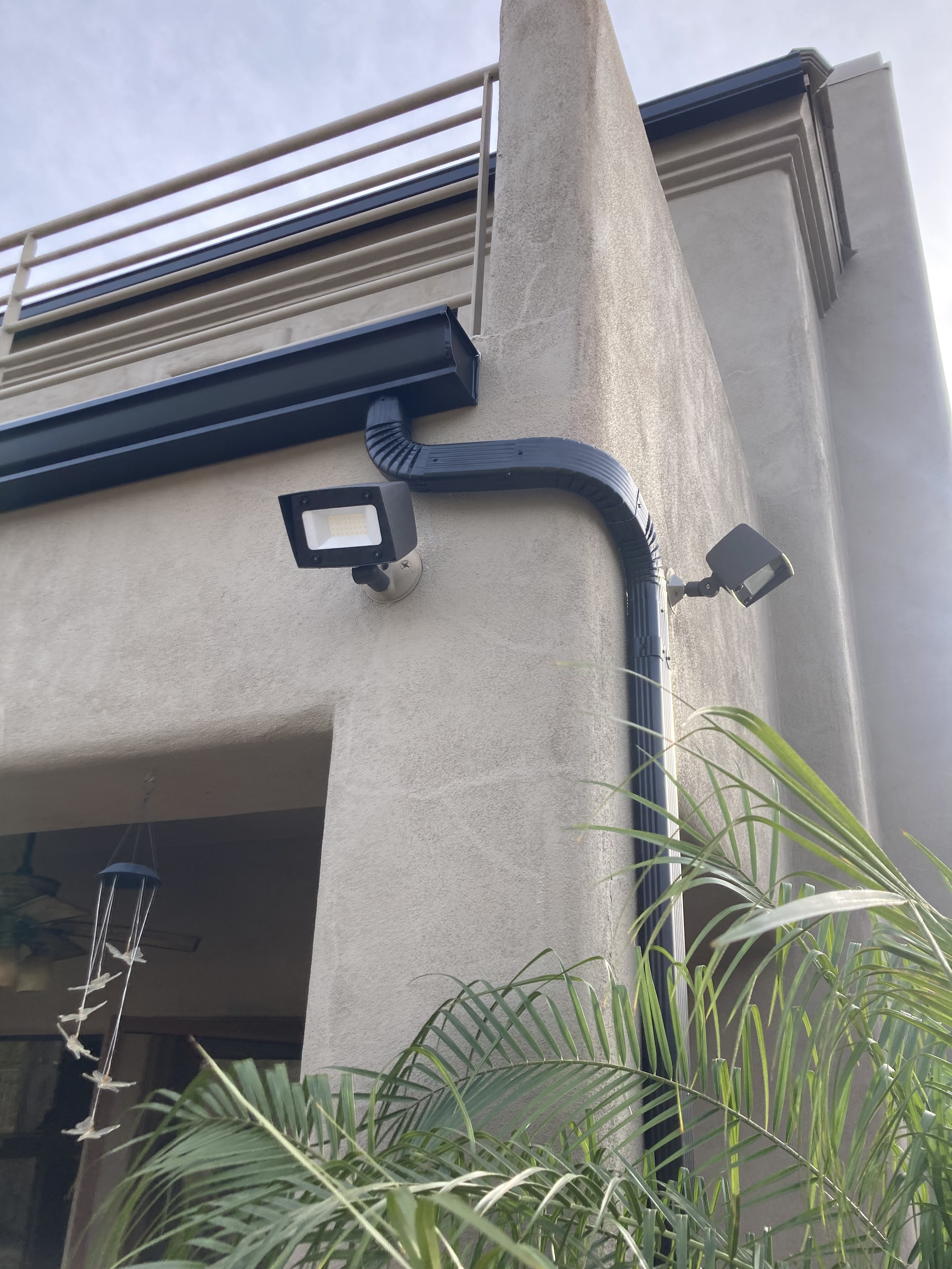
“Does it actually rain here?”
We compiled the average Phoenix valley precipitation data over the last 10-20 years. These charts give us important information about rainwater collection in the desert.
In the last 20 years, only 5 years saw less than 5” of rainfall, and 7 years received more than 7”.
Over the last 10 years, the Phoenix Metro Area has had 13 rain events greater than 1.5” in a single month.
The trend line is slightly downward, underlining the drastic importance of re-greening the valley to combat the Urban Heat Island effect.
But we will still continue to get massive unexpected rain events for decades to come and when they do, they will devastate unprepared areas.
That’s why installing an effective rainwater collection system now is critical for water security and storm drainage management in the desert.
Our rain is surprisingly well spread-out throughout the year. Seven months of each year get more than ½” of rain.
For every 1,000 ft² of roof catchment (or any area), you can capture about 620 gallons of rainwater for every 1” of rain. That adds up fast!
A general rule of thumb is to multiply the square footage of your house by 1.5 to estimate the size of your roof. For example, a 2,000 ft² house will have a roughly 3,000 ft² roof.
BONUS:
Harvesting Rainwater
“Plant the rain” • Reduce your water bill
12,000
Gallons Per Year
That’s how much rainwater an average, 3-bedroom Phoenix house can capture (2,400 sq ft roof).
You can use Google Earth to measure your roof’s surface area, and multiply by .623 to see how much you could be capturing.
Or, if you’d like your own custom rainwater harvesting design plan, get in touch with us.
Active vs. Passive Rainwater Harvesting
-
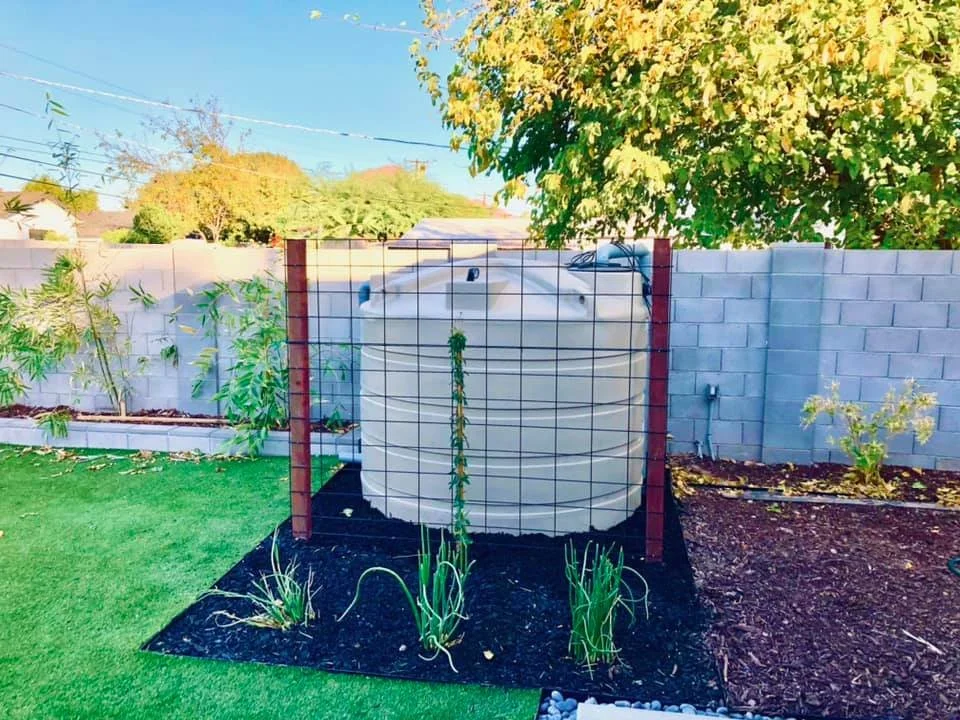
Active Rainwater Harvesting
Using a rainwater storage tank (plastic or metal) to actively store rainwater (and other forms of water) for various uses, including drinking, irrigation, and fire safety.
-
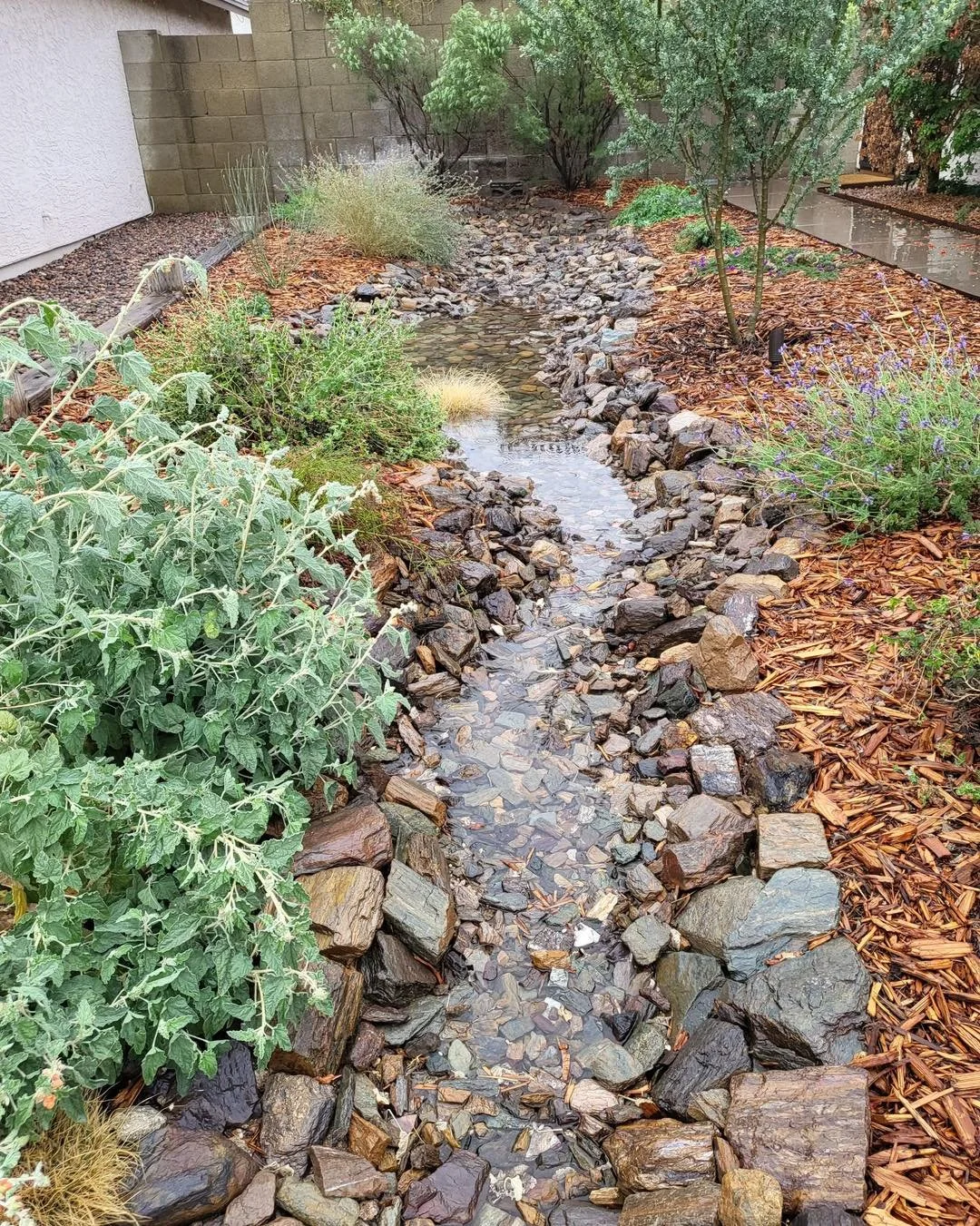
Passive Rainwater Harvesting
Storing the water directly in the ground via basins, arroyos, swales, etc. to allow your trees & deep-rooted perennial plants to access it whenever they need.
-
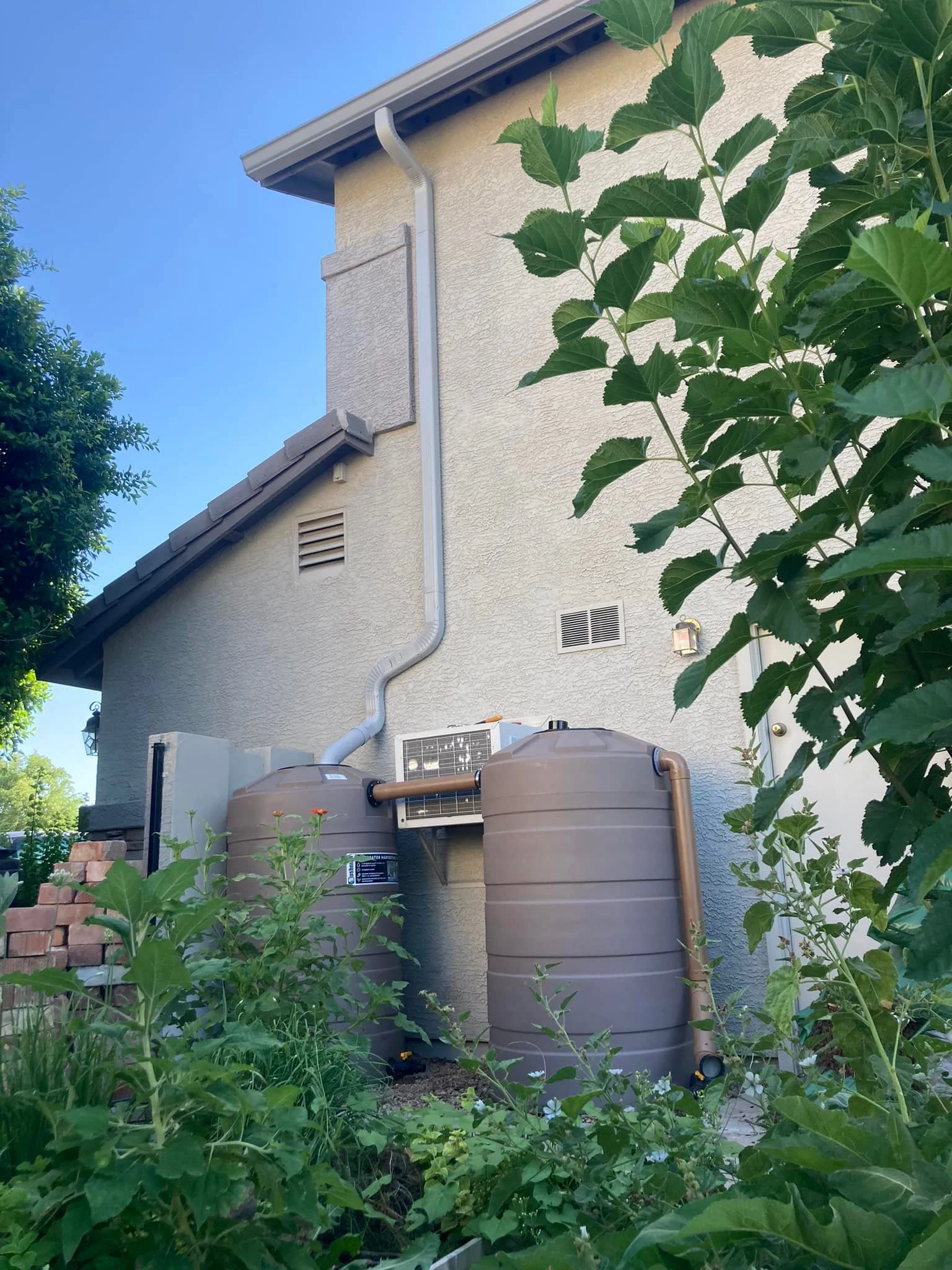
-
